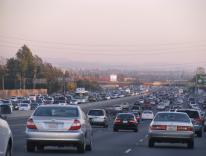One of our most-read stories in recent weeks has been Hollis Phelps’s piece on student loan debt -- the total of which nationwide now surpasses $1 trillion (second only to home mortgage debt), with the average student owing close to $30,000 on graduation. As Hollis notes, a big reason for that is that in real dollars the cost of attending a four-year school has more than tripled in thirty years, while family incomes have stagnated. Commencement is a rite of passage closely associated with this time of year, but for many new college grads and rising freshmen (along with their families) it’s now accompanied by the jolting reminder of just how much is owed or will need to be financed.
During a recent college visit with my son, the voluble and eminently capable tour guide was ultimately asked a general question about financial aid. She prefaced her general response with uncharacteristic bloodlessness: “We are a private, high-priced liberal arts college.” Commend her for being forthright, but the framing—no doubt formulated and tested by the administration—hints at what in a different context might be called multitudes: some people can afford this school, but it may be unaffordable for you; we can help arrange a financial aid package that relies in no small part on loans, but you might be better off applying to a public university.
Of course, paying even for a public, “low-priced” college presents, for many people, a financial burden. A big reason is that public schools are themselves becoming more private in terms of how their operations are funded. According to the State Higher Education Executive Officers’ latest annual report, states are covering less and less of the costs they used to, with students now on average providing almost 50 percent of what’s known as educational revenue—the money that goes to teaching and administration; in some states, students cover as much as 85 percent of those costs. Jordan Weissman at Moneybox:
Government cuts are part of the privatization story, but so are increasing expenses. States tend to cut funding to colleges in the wake of recessions, which forces tuition up. When the economy heals, they often restore some of it. But even if they do, tuition generally doesn’t drop much. Instead, the previous hikes tend to get locked in, as schools accumulate new expenses. But whether you think heartless legislators or feckless administrators are to blame, the end result is the same: Students are paying a growing share of costs, and the public’s share is shrinking.
The report comes on top of new a study showing America’s middle class is no longer the world’s richest, and Tuesday’s Supreme Court decision affirming Michigan’s ban on considerations of race in making decisions on admissions to public universities. A college education has long been held by acclimation as a way to aid entrée into the ranks of the solid middle class, a notion given something more than gauzy symbolic appeal via concrete public and legislative mechanisms for making it at least a viable option for as many people as possible. And yet now that option is daily becoming less viable, even when more employers are making a college degree part of their hiring requirements. Sometimes it’s hard to ignore what looks like intent behind the dismantling of structures built to allow equal access to opportunity, and the disregard for the circumstances of the people who seek simply that access (these usually go hand in hand, of course). Charles P. Pierce is explicit about this in his comments on Tuesday's ruling, and—importantly—references other recent court decisions in making his point:
The decision was written by Anthony Kennedy, who lives in that wonderful world where the law is a pure crystal stream running through green meadows, unsullied by the grit and silt that piles up in the actual lives of actual human beings. … [This decision] is pure majoritarianism -- grotesquely so, if you consider the ongoing shenanigans at the state level regarding ballot access and voter suppression. There will be a real impact on real people -- just as there will be with the gutting of the Voting Rights Act and with the cascade of money that this Court has unleashed on the political system ….
The blistering fifty-eight page dissent of Justice Sonya Sotomayor has received a lot of attention for both its impassioned tone and its swipe at Chief Justice Roberts’s 2007 quip that “the way to stop discrimination on the basis of race is to stop discriminating on the basis of race”: “The way to stop discrimination on the basis of race,” she said, “is to speak openly and candidly on the subject of race, and to apply the Constitution with eyes open to the unfortunate effects of centuries of racial discrimination.” She also came armed with data, noting that in the time since Michigan voters approved the ban on race-based considerations in 2006, the proportion of black freshmen among those enrolled at the University of Michigan declined from 7 percent to 5 percent, even though the proportion of black college-aged persons in Michigan increased from 16 to 19 percent.” This comports with data from other states, like Florida and California, where similar measures are in place.
Yet according to a new Pew poll, Americans overall support affirmative action, by a margin of two-to-one, as a way to increase the number of black and minority students on campus; 83 percent of black Americans support it, as do 55 percent of white Americans. Justice Kennedy wrote in the Court’s plurality opinion that “this case is not about how the debate about racial preferences should be resolved. It is about who may resolve it.” In other words, it was up to Michigan voters. And it still could be, in Michigan and elsewhere, as some observers hopefully point out, and not just on the race front but maybe on the access-and-affordability front as well. The middle class, poorer than before, more racially diverse, and finding itself less able to attain that which once determined what it is to be middle class—such as a college education—still has numbers. Yet whether in its weakened state it can actually effect the kind of change required to restore and strengthen measures that would put college back within reach of as many Americans as possible is a different question.
Please email comments to [email protected] and join the conversation on our Facebook page.
Share
Previous Story
Nienstedt deposed.
Next Story
Here--let us hold your jacket


